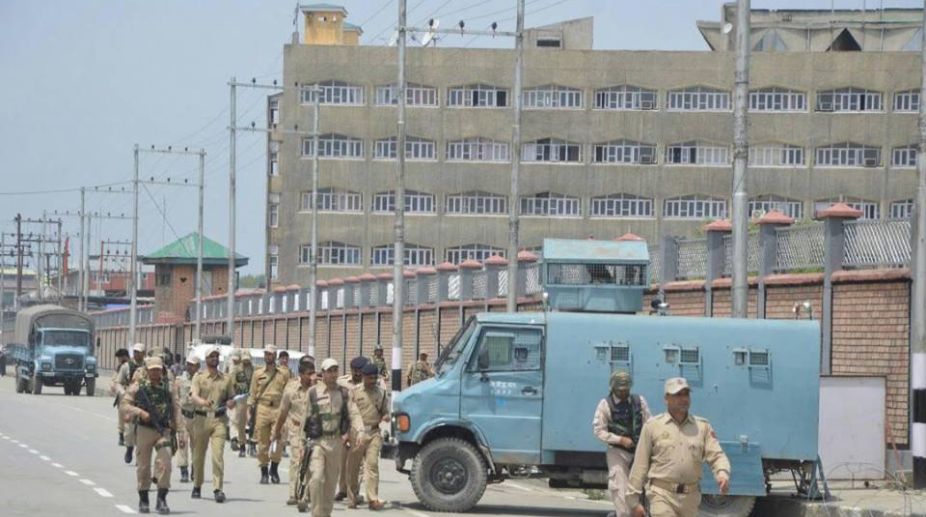Ongoing wet spell reduces rain deficit in J-K by 15%; Ladakh gets snow
The current wet spell across Jammu and Kashmir is due to a Western Disturbance which has reduced the rainfall deficiency by 15 percent.

(Photo: Facebook)
Twice a year, the J-K state machinary moves along the national highway, spending summers in Srinagar and winters in Jammu. It maintains this practice of pre-Independence India.
This shift of the state government, termed darbar move, involves movement of staff, families and government offices. While the move is in progress, the working of the government comes to a standstill.
Advertisement
This move is also a colossal logistics exercise and an immense burden on the state exchequer. It was commenced by Maharaja Gulab Singh in 1872 and was acceptable then, when the entire state, including POK and Gilgit Baltistan were one entity.
Advertisement
The Maharaja was not answerable to anyone on expenditures incurred and manpower employed in this exercise. Further, for a state that had the picturesque Kashmir valley, it was irresistible for the Maharaja to spend summers there and entertain those who mattered.
J-K has shrunk in size since independence. Hence is the darbar move still mandated in the present era of communications and if not, where should the state capital be located? It isn’t the movement alone that costs money.
Expenses include sums spent on hiring accommodation for state government employees who retain their families at one location and redeploy for the other, as also refurbishing and re-establishing offices for the staff. Losses and damages since the last stay need to be repaired or replaced. The greatest impact is the closure of government offices during this duration.
Accidents along the route, resulting in loss of stores and documents, only increase problems. Space is always a constraint in any city, especially when development is the mantra across the nation. By maintaining two state capitals with complete amenities, the government locks up land and buildings for long durations, denying space for other utilities.
If this cost is added to the other expenditure, it would be a huge sum. Though J-K gets the largest grant from the Centre, it has yet to effectively utilize the same.
A unique problem facing the state is the vast contrast between the populace of the three major regions comprising the state. Jammu and its surrounding districts are Hindu dominated, while Kashmir has a Muslim majority. Ladakh, though less developed, banks on tourism for income while its inhabitants are Buddhists and Shias.
The requirements, needs and desires of all regions vary. Jammu would willingly accept removal of article 370, permitting large-scale investments. It is the gateway to the state, hence important as all goods for the state transit through the region. It is possibly the best developed region of the state, though lacks it employment avenues due to restrictions imposed by the article.
Srinagar and its surrounding districts are caught in the throes of militancy and agitation. While unemployment remains a major concern, the population has strong views on any attempts to abrogate article 370. Ladakh has always felt that it receives step brotherly treatment and hence seeks Union Territory status.
Another unique factor, visible at this stage, is the reaction of the local public, as proved in their support to political parties in the last assembly elections.
The BJP dominated the region south of Banihal and the PDP north of it. The Congress dominated Ladakh. Moving the capital from one part of the state to the other has been disadvantageous for all regions. In every other state, the capital is always the showpiece of the government and extra expenditure is allocated for improving amenities and services in that city. In the case of J-K, both cities, Jammu and Srinagar, are ignored as none is the permanent capital. Lack of facilities and poor availability of services is evident.
Hence, the residents of both cities are losers. Srinagar and the districts of the region have been in a state of turmoil since the early 1990s. Pakistan-sponsored terrorism has resulted in deaths, loss of revenue and stalled development, while youth have been incited to join the ranks of militants.
Post the ethnic cleansing of Kashmiri Pundits, an anti-India wave caused by religious fervour has begun sweeping the region. Since other parts of the state are now out of the throes of militancy, the government needs to concentrate on the valley.
Winning the trust of the youth, engaging in dialogue across all strata of society, pushing forth a developmental agenda, providing a corruption-free government and overseeing maintenance of law and order are priorities for the state government at this stage.
The machinery of the state must be visible across the region for that to happen. It would never be possible if the government is visible only for limited durations.
Thus, ideally the state capital should permanently be located at Srinagar enabling the state machinery to oversee the situation and ensure an early return to normalcy. It would be able to ensure effective development of the region. It should release land and offices held by the government in Jammu to the Centre to establish central facilities and institutes, thereby enhancing employment opportunities and reducing the impact of loss of the state capital for the region.
With existing communication facilities and availability of faster modes of travel, the staff when required can move to different parts of the state.
The funds saved from this unnecessary annual move could be better utilised for development and provision of amenities and facilities to the people of the state. If the government of India has stopped the British era tradition of moving from Delhi to the summer capital of Shimla, the J-K government should also consider the same, stop the annual move of the darbar and be based permanently in Srinagar.
The writer is a retired Major-General of the Indian Army.
Advertisement